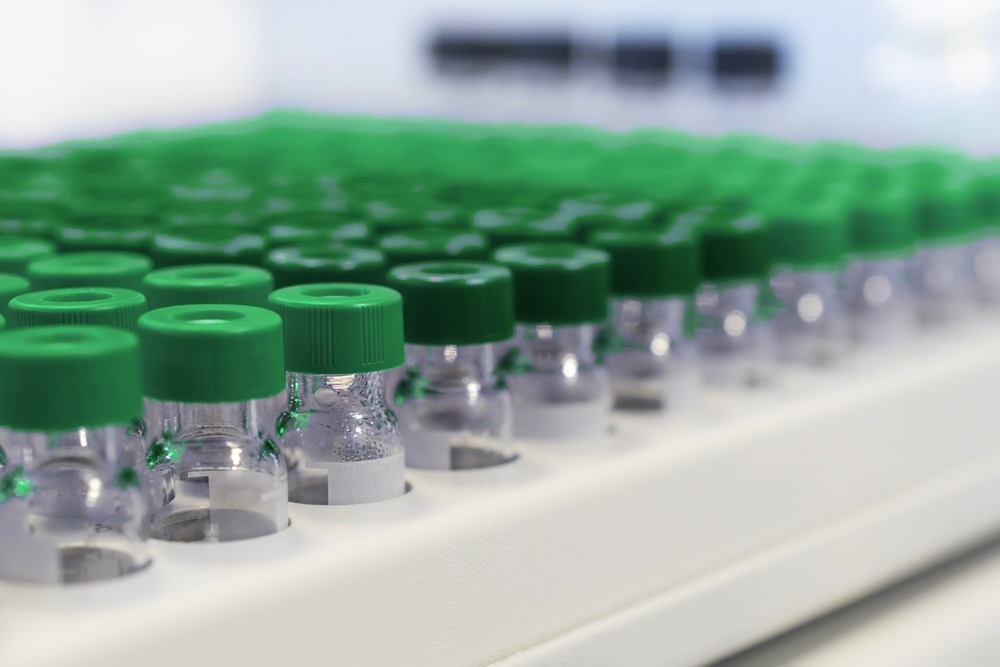
insights from industryColin JumpCEOePrep
Please, could you introduce yourself and tell us what inspired your career within science?
My name is Colin Jump, and I am the CEO of ePrep, based in Victoria, Australia. Growing up, I was always curious about how things worked and why such things existed in the world. This curiosity essentially started my whole career in science and engineering as I began my career as a telecoms engineer and later moved into other sciences.
Could you please tell us more about ePrep and some of your missions?
ePrep was created approximately eight years ago to automate manual processes in laboratory sample preparation. We have developed a working system over this five-to-eight-year period, which has automated many of the manual steps involved in sample preparation.
Despite being a relatively new company, the team behind your technology has combined scientific knowledge of over 60 years. With such a varied and experienced team, how does this help when understanding the needs and wants of analytical chemists?
Understanding the needs and wants of analytical chemists comes from the team's experience in liquid handling and analytical science. The founder of ePrep is the son of the founder of SGE, and they began with analytical syringes, later getting more involved in analytical consumables for chromatography.
Having this history behind us is invaluable to understanding the needs of our customers in terms of sample preparation and the automation of sample preparation.
The life sciences sector has seen incredible advances in recent years, with automation technologies speeding up many research processes. Despite this, some fields within the life sciences, such as sample preparation, have not benefited as heavily. Why is this, and how is your technology changing this?
At conferences like SLAS, it soon becomes very apparent how few, if any, analytical sample preparation automated systems exist. This is due to the complex nature of automating analytical sample preparation. It has taken us five to eight years as a company to develop such a system, and nobody else in the market is doing what we are doing right now.
At ePrep, you have created a product range focused on automating analytical sample preparation. Could you tell us more about this product and its research applications?
The product itself is based on analytical syringes, moving extremely small volumes, down to microliters, up to milliliters, in a very precise and reproducible way. We can load 12 different types of syringes on a workstation.
The robot can choose which syringe best fits the workflow required to perform, such as an environmental, food, or clinical application. The product is highly customizable, and with such intuitive software, we find that most users can move it from the crate onto a bench and have it running within 30 minutes, which is extremely unusual in this business.
The software was designed to be very intuitive, utilizing a drag-and-drop approach. This means that if a tablet is being used, you are able to program the workflow by simply moving your finger across the racks. This makes our product extremely different from anything else on the market.

Image Credit: Nordroden/Shutterstock.com
Sample preparation is a vital part of the analytical research process as this can often directly impact the observed results. With such an important role to play, what advantages do your products offer analytical chemists?
Due to its precise nature and reproducibility, the robot can operate outside of typical working hours. This allows a user to load up to 100 samples at any one time on the workstation, configure the workflow, press the 'Go' button, and leave it to operate independently, removing any tedious pipetting and filtration.
Solid phase extraction (SPE) can also be carried out on the workstation, all by a robot, in a highly precise, reproducible way.
Do you believe that with new automated technologies being developed surrounding sample preparation, this will, in turn, further accelerate the field of analytical chemistry?
Certainly, if you look at any analytical laboratory, there is this tedious manual sample preparation carried out by a lot of people. The introduction of robots like the ePrep releases those people to be able to carry out other tasks in the laboratory, which are more worthwhile to science.
With so many new breakthroughs and start-ups within the life sciences, what are you personally most looking forward to in the future? Are there any particular breakthroughs that excite you?
The breakthrough that we are looking forward to and are currently working on with collaborators is the extension of automated sample preparation all the way through the entire workflow into HPLC or GC and then using mass spectrometry as a detector. This would be a seamless workflow, which I believe we are not far away from.
You are currently attending SLAS, an international exhibition bringing together both researchers and industry professionals. Why are tradeshows like SLAS important in sharing new ideas and creating new partnerships?
Face-to-face meetings are invaluable. You can do a lot via Teams, Zoom, and similar platforms, but human beings want to talk to other human beings, and trade shows like SLAS are invaluable. For instance, at this show, I have already discovered one or two gems I was previously unaware of.
What is next for ePrep? Are you involved in any exciting upcoming projects?
We are currently working in collaboration with some big industry partners. However, in terms of our own development cycle, we want to spend more time with the software.
There are some new features that we want to introduce to the software to make it even more user-friendly than it already is. Over the next year or so, there will be some major updates to the software.
The collaborations, however, are really important, and this is where we see how sample preparation can be automated into analytical laboratories because our platform is designed for chromatography applications.
About Colin Jump
Colin Jump, CEO of ePrep Pty Ltd – Automated Robotic Sample Preparation
35 years experience in the Life Science market.
Held many senior leadership roles for various organisations during my career. This career has also included CEO role of a publicly listed company in the UK and was responsible for raising capital funds on 3 occasions.
Since moving to Australia back in 2016, I have successfully turned around a manufacturing business in Sydney, which researched and developed Electron Multipliers for the Mass Spec industry and subsequently helped the business find new ownership. I am now leading an innovative business developing a unique platform for automated sample preparation specific for chromatography/MS applications.
Sponsored Content Policy: News-Medical.net publishes articles and related content that may be derived from sources where we have existing commercial relationships, provided such content adds value to the core editorial ethos of News-Medical.Net which is to educate and inform site visitors interested in medical research, science, medical devices and treatments.